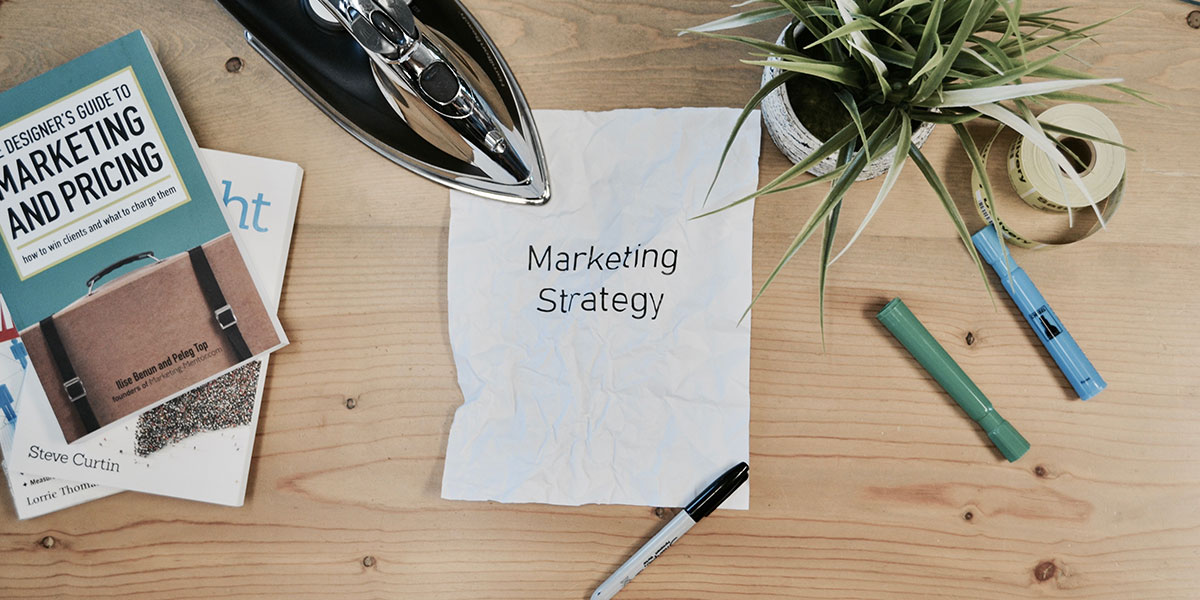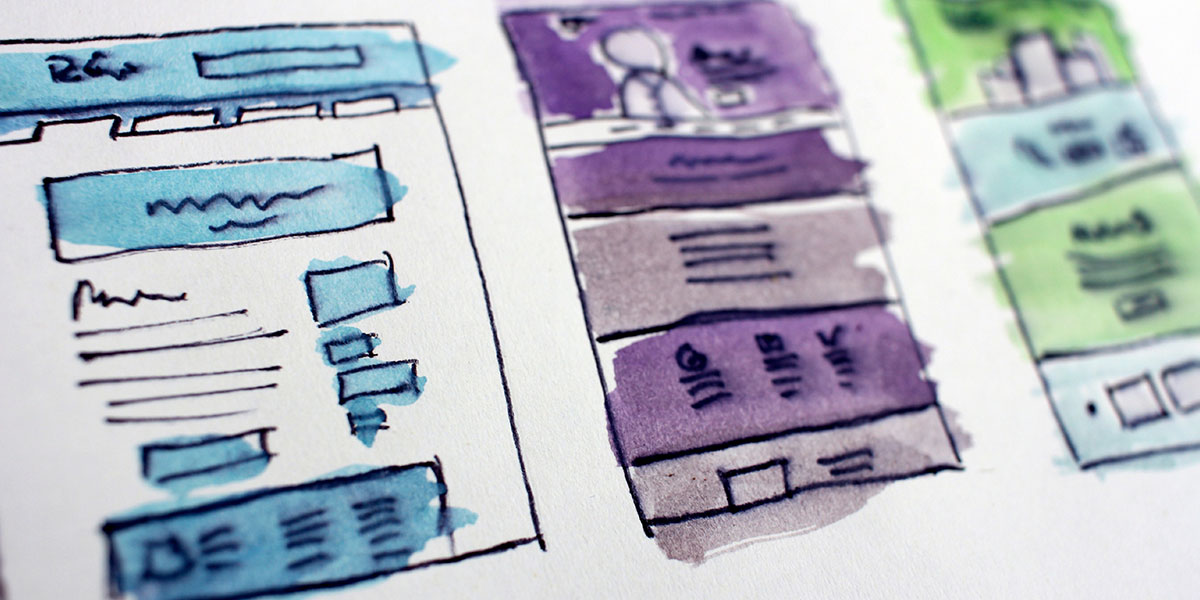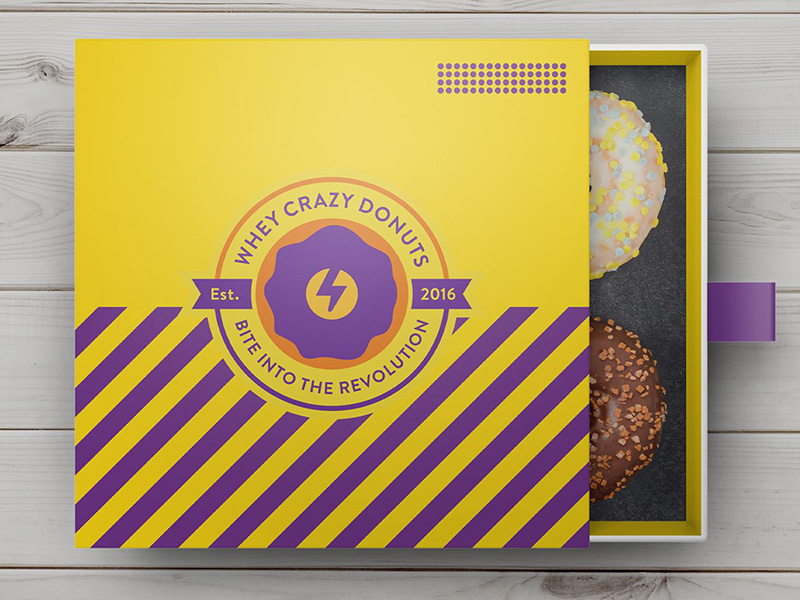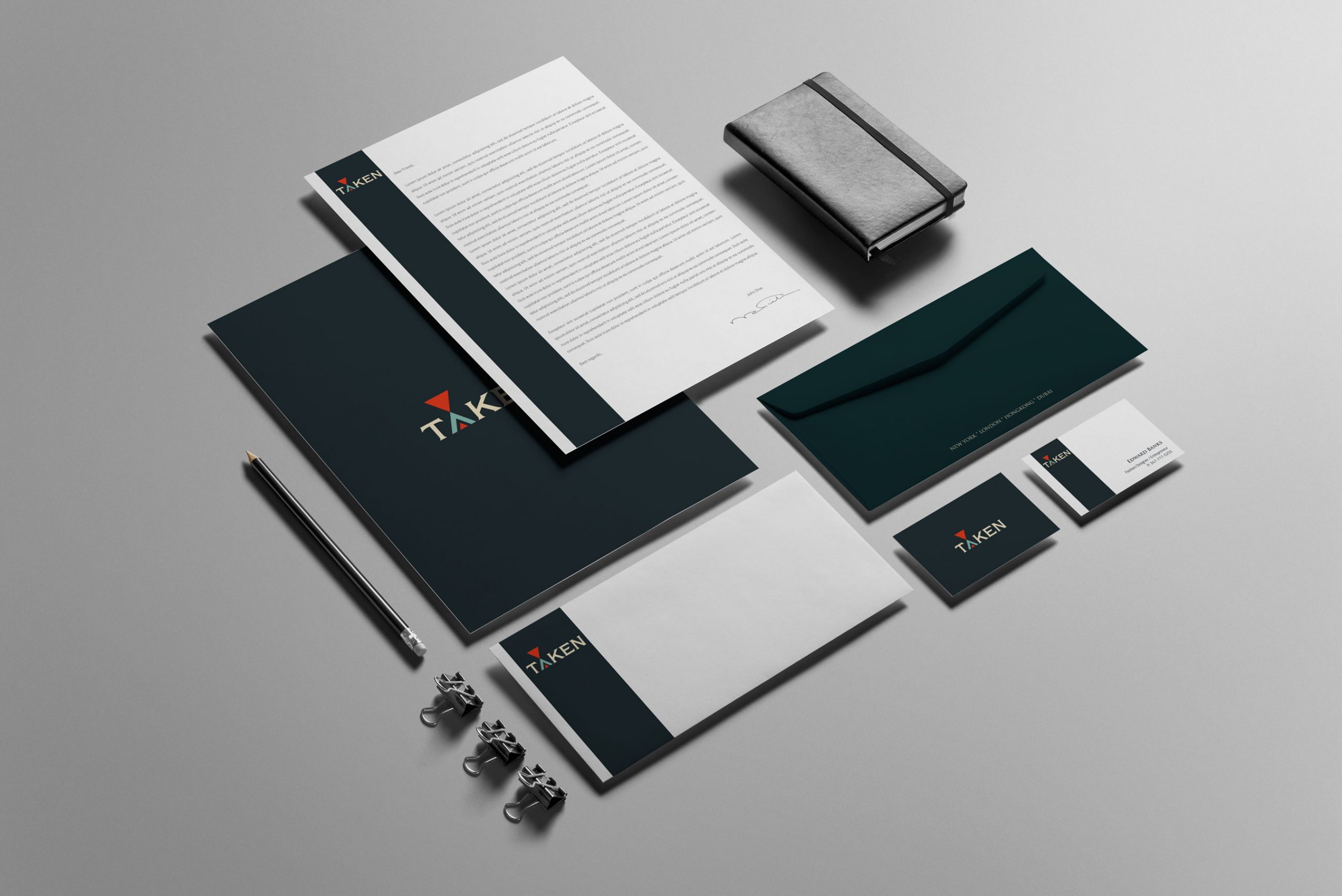Spellbrand Blog
Master the Sales Funnel to Double or Triple your Sales

Master the Sales Funnel to Double or Triple your Sales and Revenue: If you’ve heard marketers talking about ‘funnels,’ you may have come away with the impression that sales funnels are mysterious tools to be used only by experts.
Nothing could be further from the truth.
In this series, you’ll learn all about sales funnels and how to use them to their fullest potential. In this first post, we’ll describe the process in broad terms, so you can gain general familiarity. Then, in future posts, we’ll go into great detail about every part of the process along with optimizing funnels, survey funnels and funnel landing pages so you can employ this powerful marketing approach yourself.
You’ll learn:
- Which types of ads to use at each phase of the funnel
- What email sequences are and how to build them
- What loss leaders are and when to use them
- Much more
Let’s get started.

Why You Need a Sales Funnel
You started your business off right by creating a business plan, securing adequate funding, creating a killer website and developing unique and high-quality brand assets. Why would you skimp on marketing? If you’re selling a product or service, you need a sales funnel. Full stop.
Without mapping out a sales funnel, your marketing efforts will be disorganized. That might be okay if you have no competition, but how many businesses does that apply to?
But by constructing an efficient sales funnel, you laser-focus your marketing efforts. Without a funnel, your potential customers might land on your sales page once or twice, but if they don’t buy right then, you’ll lose them. Will they come back? Maybe. Maybe not.
With a funnel, you can nurture these leads wherever they happen to be in the process. Consequently, you can stop aggressively chasing sales so you can focus on improving your product or service.
Finally, mapping out a funnel will allow you to simplify your marketing efforts, which makes your marketing more consistent. This leads, over time, to higher sales volume. Once you know which phase your leads are in, you can identify the weak links in the marketing chain. In other words, you’ll know where customers are falling out of the funnel. You can’t fix a problem if you don’t know what needs fixing, and you certainly can’t solve a problem if you don’t know you have a problem in the first place.
Coupled with your branding efforts, a marketing funnel sets you up for success.
What Is a Marketing Funnel?
A marketing funnel represents a series of steps with which you can guide the consumer from initial exposure to your brand to becoming a customer. Examples of design resources used along the way include digital advertising, your landing page, a loss-leader such as an ebook or an email sequence. Any business with a digital presence should structure their sales process around a sales funnel.
You may see the sales funnel referred to as a ‘revenue funnel’ or simply the ‘sales process.’ Both of these terms are equally valid, but throughout this series, we will stick with sales funnel for simplicity. This is not to be confused with sales materials.
The sales funnel takes customers from cold lead to customer through a series of phases.
The Phases
These phases are the awareness phase, the interest phase, the evaluation phase, the purchase phase, the reevaluation phase and the repurchase phase. They form the core structure of the brand immersion marketing methodology. Let’s explore them one by one.
#1 The Awareness Phase
This is the phase in which prospects become aware of your brand, your product, or both.
#2 The Interest Phase
In this phase, the prospect demonstrates an interest in solving the problem they are facing. They do this by conducting research into existing solutions. Note that at this point in the process, while the customer may be aware of your product, and may have even expressed interest by signing up for emails, they are also researching other solutions.
#3 The Evaluation Phase
In this phase, research into the various solutions on offer intensifies. Ideally, the potential customer is looking hard at your product and has given you permission to market to them via email or some other method that you can track.
#4 The Decision Phase
In this phase, the customer makes a final decision.
#5 The Purchase Phase
As you might expect, the customer pulls the trigger in this phase. Ideally, they buy from you.
#6 The Reevaluation Phase
In this phase, the customer considers whether they want to continue paying for the product or service they’ve purchased. In a B2C setting, this mainly applies to SaaS offerings, but it can also apply to physical products. For instance, supplement e-shops often allow customers to set up automatic deliveries, referred to as reorders.
In the B2B setting, this often means renewing a contract.
#7 The Repurchase Phase
The phase in which the customer actually renews their subscription reorders or renews their contract.
With today’s marketing tools, it’s possible to send custom marketing or brand messages to anyone at any point in this sequence.

How Marketing Fits In
Marketing is crucial to all phases of the sales funnel, from beginning to end, top to bottom. However, savvy marketing tactics are especially important in the beginning phases, or at the top of the funnel, if you prefer to think of it that way. Remember, these are people who are unfamiliar with your brand, so you’ll have to convince them that you offer a quality product or service.
Digital advertisements that appear on social media and that are highly targeted are well suited to the awareness phase because this is where your customers are hanging out. In addition, it can be worthwhile to establish a presence on Facebook and other platforms so you can engage in social media marketing and content marketing, which have a lower upfront cost.
Speaking of content marketing, blogging is a stellar way to subtly advertise your product or service in the awareness phase. Becoming a Sage archetype in your space is a long-term endeavor, but it can be well worth it. Over time, this strategy can reduce your dependence on digital advertising and [creates Ruler archetype perception](/blog/brand-perception).
Then, when you have content all your own, you can share this content on platforms such as Facebook, Pinterest, and Twitter. Just remember to lead with value. Don’t turn your posts into outright advertisements. Your posts should solve a problem for the potential customer, and that problem should be in some way related to the product you offer.
For instance, if you sell budgeting software, you might explain how to set up the old-fashioned, but still very useful, paper envelope budgeting system. This budgeting scheme allowed people to save up for specific purchases in a time before computers when keeping cash on hand was much more common. In this post, you would explain the overall method but finish with a call-to-action that leads the customer to try your related, but superior, software solution.
In later phases, such as the interest or evaluation phase, you might rely more on opt-ins and loss-leaders. For instance, you might offer a valuable ebook in exchange for the customer’s email. Once you have their email—and permission to send them marketing messages—you can send them more information about your solution. The key word here is value. If your loss leader—your free ebook, guide, webinar, etc.—is low value, the customer will assume that your product is low value too.
Webinars, in particular, are extremely powerful in the interest and evaluation phases. We’ll cover this more in a future post in this series, so stay tuned.
Retargeted ads are very powerful when your customer is in the decision phase as they can help you stay top of mind. Not to worry. We’ll explore all of these strategies in future posts.
With all this in mind, let’s turn our attention to the anatomy of a good sales funnel.

The Top of the Sales Funnel
The top of the funnel represents the following phases:
- The awareness phase
- The interest phase
In this phase, your goal is to generate leads and to get those leads into a nurturing process. This is the stage where your marketing efforts take a potential customer from cold lead to warm lead. Indeed, at the very top of the funnel, the customer may never have encountered your brand before. For this reason, your advertising efforts in this part of the funnel must be top notch.
Capturing leads via Advertising
As stated, you will rely heavily on digital ads in this phase. Both PPC—pay per click—and CPM—cost per thousand—ads can come into play here. In general, you will use PPC ads to take cold leads directly to your sales page or marketing video, and you’ll use CPM ads to build brand awareness. The difference between the two:
- With PPC, you pay for each and every click
- With CPM ads, you pay to expose customers to your brand.
PPC ads tend to be favored by digital marketing experts because the customer is landing on a sales page. However, CPM ads can be a powerful tool for brand building, and they are often less expensive than PPC ads.
Capturing Leads by Providing Value
Earlier, we listed many top-of-funnel conversion tools you might try, such as Webinars, an email series or a downloadable resource.
Many companies that neglect the sales funnel have a trait in common. They tend to set up their sites to primarily convert sales-ready leads. For instance, on such sites, you might find a ‘Contact Us’ prompt, a phone number or a ‘Schedule An Appointment’ widget. Targeting sales-ready leads is all well and good, but what about people who find your site through other means?
By focusing on the top of the funnel, you can entice these consumers to engage with your brand, thereby building trust.
Once you have something of value to give away, you’ll need to set up an email marketing campaign. We’ll cover email marketing in more detail in a future post in this series, but for now, know that you’ll need to nurture these top-of-funnel leads by sending insightful marketing messages. Email marketing is also an important component of mid-funnel marketing.
Other Marketing Strategies
The best top-of-funnel strategies bring in leads that fit your ideal customer profile. Aside from paid advertising, content marketing and providing value, you can also try:
- SEO. This involves publishing content and optimizing said content for specific keywords.
- Targeted marketing. This involves targeting specific people, companies or other entities through various strategies.
SEO, in particular, has the potential to get hordes of people into your funnel. Of course, building search engine rank takes time and, more and more, it requires hosting high-quality content on your domain.

The Middle of the Sales Funnel
The middle of the funnel is where the evaluation phase takes place. At the top of the funnel, you take a potential customer from indifference to interest. In the middle of the funnel, you make your case as to why the customer should choose you over your competitors. Your goal, in particular, is to get them to your landing page so they sign up for your loss leader if you haven’t already. Why? Because, otherwise, you’ll find it extremely difficult to recapture their interest if they leave your site.
One tried-and-true way to accomplish this is to offer an email series or course..
Email Sequences
As stated, we’ll cover email marketing in a future post. But for now, we want to give you a general idea of what email sequences are, and why they can help immensely with your marketing efforts. An email sequence, or auto-responder sequence, as they’re also known, is a series of emails you send to a prospect to get them to take a specific action.
Most often, this takes the form of the lead buying the product itself. Savvy marketers, however, use email sequences to their max potential by getting the lead to agree to some commitment of time or energy.
An example is an email sequence that culminates in an invitation to attend a webinar. By attending the webinar, the lead is becoming more invested in the company and its products, even if this occurs on a subconscious level. This means that if you offer a webinar and your competitor doesn’t when it comes time to make a purchase, your lead is more likely to think of your product first. Why? Because they spent more time engaged with your brand.
Note, however, that as always, the webinar should provide value. It shouldn’t be an hour long commercial for the product itself. Check out some successful advertising campaigns to understand how they do it.
Below are the five rules for creating an effective email sequence.
#1 Choose a Topic That Will Drive Your Customers to Click Your Emails
If you’re going to keep your lead interested in your emails, you need to offer something of value. For this reason, many marketers disguise their messages as an email course. If you go this route, make sure that the topic you choose is valuable enough to keep the consumer engaged over several days or weeks.
If you have an established blog, you can get brand story ideas for your email series by looking at your traffic. Which of your posts performed best? Which posts got the most comments or requests for clarification? These posts are stellar candidates for an email series as you can expound on the topic. You might also use a tool like BuzzSumo to see posts from related sites that performed well on social media.
Remember, your goal in the middle of the funnel is to differentiate yourself from your competitors. One way to do that is to send marketing messages that provide value. If the only difference between you and your biggest competitor is that you take care to send valuable emails and your competitor sends non-stop spam, you will win.
#2 Promote Your Email Series or Course
Another reason your email series or course must be high-value is that you need to be able to promote it. Your email series should be so valuable, in fact, that you feel comfortable creating a landing page for it. That way, you can promote the course on social media. This gives your brand ambassadors a way to promote it for you too.
You can also promote your email series with ads on Facebook, Instagram, etc., or through sponsored blog posts.
Another way to promote your email series or course is to add a CTA—call to action—at the bottom of your blog posts.
#3 Produce High-Quality Content
No one, and we mean no one, will read an email that’s littered with typos or grammatical errors. Worse, sending such emails over and over might not just get you deleted, it may get you marked as spam, too. Not good.
Treat your marketing emails with the same care you would your blog content. If you can’t edit, hire someone who can.
#4 Learn Copywriting Principles
There are several formulas and methods you can learn. Here are but a few:
- A/B Testing
- The PAS Formula
- Various persuasion techniques, such as sensory words, emotion words and power words
#5 Don’t Forget the Next Step
Finally, don’t get so swept up in providing value that you forget that final, oh-so-important call to action.
At the end of your course, you should tell your customer what their next step should be. That next step is, obviously, to buy your product or service. But that’s not really the next step, is it? Make it specific. Their actual, literal, next step might be to contact your sales team. Or it may be for them to watch a video that explains why your solution is far superior.
Whatever you choose, make sure it’s a concrete next step that propels them toward buying your product or service.

Mid-Funnel Advertising
While you’re warming mid-funnel leads with an email series, you should continue targeting other prospects with ads.
All of your ads must contain the following:
- A strong headline
- Attention-grabbing copy
- Engaging visuals that include your logo
- A clear call to action
But unlike top-of-funnel ads, your goal is not to merely expose a cold lead to your brand or product. Now, you want to make your call to action the focus of the ad. Why? Because these prospects have already been exposed to your brand and may have even expressed interest. Now, you need them to take…yep, action. Only through spurring your leads to take action can you move them through the funnel.
While your mid-funnel ads can lead back to your sales page if your sales page contains something they can take action on, a stronger mid-funnel strategy is to lead the customer to a video, white paper or some other form of content. Remember, at this juncture, the consumer is aware of your offer. What you need to do now is to build trust and stand out from your competitors.
Below are a few types of content that work well.
#1 Case Studies
Case studies showcase your best results. They’re a powerful sales tool without being outright salesy. Case studies allow you to demonstrate to warm leads how you helped people just like them. With sophisticated marketing techniques, you can even create case studies that address a specific pain point and then target that case study to customers who may be experiencing that pain point right then.
#2 Webinars
As mentioned, webinars are extremely powerful. Just remember to keep the focus on providing value. Your sales pitch should come at the end.
#3 Blog posts
If you don’t have a blog, then what are you waiting for? An active blog that provides value is one way to stand out from your competitors. What’s more, a blog gives you an easy way to inject some personality into the process. Modern consumers like being able to engage with companies on a personal level—they like seeing the human side of the business.

The Bottom of the Funnel
This is where your potential customer decides to buy from you, also known as ‘the conversion.’ Your conversion rate is the primary metric by which you will measure the success of the entire funnel. We’ll address ways to optimize the conversation rate in a future post, so stay tuned. For now, you should know that there are several end-of-funnel tools you can use.
- Conversion optimization tools. These are tools that allow you to increase your conversion rate. Examples include retargeted ads and automated marketing tools that are driven by artificial intelligence.
- Heat mapping tools. These tools show you in a very visual way where your customers are clicking on your landing page. With a heatmap, you can test the performance of visual elements on your page. Heat mapping tools are important for overcoming banner blindness.
- A/B Testing tools. A/B testing, or split testing, allows you to test two different versions of the same ad. This way, you can drop the poorly performing version. This helps you increase your click-through rate, which can lead to a lower cost per click.
Bottom of the Funnel Content
Bottom of the funnel content is any marketing material that convinces the prospect to pull the trigger. They’re familiar with your brand, they’ve joined your email list and may have been through an email course. Or maybe they’ve attended a webinar. Now it’s time to convert them. Examples of end-of-funnel content include:
- Sales enablement materials
- CRM materials
- User communities
Note that sales enablement materials and CRM materials are generally not consumer facing. They are materials created for the sales team. These materials focus on consumer pain points and help your sales team illustrate to the prospect of why your solution is best.
On the other hand, a user community is consumer-facing. For an example of a user community done right, check out American Express. They have built a platform through which customers and fans of their brand can post entrepreneurial tips and ideas for one another. Cold leads come to the platform for the user-generated content, but because they’re constantly exposed to the American Express brand throughout the experience, they may eventually convert into an American Express customer.
Your Goal at The Bottom of The Funnel
Your goals at the bottom of the funnel are to:
- Accelerate the deal cycle
- Establish your product as the obvious choice, far superior to anything offered by your competitor
- Build additional trust and inspire confidence
Note that, at this point in the funnel, potential customers tend to ask pointed questions. They’ve evaluated numerous solutions and now they’re interested in your solution. Consequently, they want to know exactly how your product works. Here, you want to focus more on specific features and less on vague benefits.
What You’ve Learned
In this post, you learned what a funnel is, and in broad terms, what to do in each part. Additionally, you learned the phases of the purchase process, which are:
- The awareness phase
- The interest phase
- The evaluation phase
- The decision phase
- The purchase phase
- The reevaluation phase
- The repurchase phase
In the next post in this series, we’ll explore each of these phases in more detail. If you haven’t already, consider signing up to your mailing list you can be notified when we publish our next post.

Mash Bonigala
Creative Director & Brand Strategist
With 25+ years of building brands all around the world, Mash brings a keen insight and strategic thought process to the science of brand building. He has created brand strategies and competitive positioning stories that translate into powerful and stunning visual identities for all sizes of companies.
Featured Work
See Our Work in Action
Real brands, real results. Explore how we've helped businesses transform their identity.
Client Love
What Our Clients Say
Don't just take our word for it. Hear from the brands we've worked with.
Steve Turner
Turn2Coaching
"Delighted to have used Spellbrand for our last project. The work was thorough and results excellent. For me it was such a pleasure to work with Mash who was able to keep up with all my last minute requests for small changes. Nothing was too much of a problem and I would have to say that its great to work with people who do actually put the customer needs first! One thing saying it, its another thing doing it – Thanks Mash!"
Liana Alexander Raye
Harlequin Starr International Styles
"Working with the Spellbrand team has been incredibly easy. Mash has a team of experts who are extremely visionary and pioneering, pulling together ideas and initial thoughts into an actual brand giving you options that you feel best align with your thought process. I have no idea how they created my brand based on the vague brief I gave them, but they have worked wonders and magic. Their design, attention to detail, willingness to ensure the final product is exceptional all counts towards a company who has the client at the forefront of mind at every step of the way. Spellbrand is my Number 1 go to for all branding, website and design concepts moving forward. I look at them as an extension to our marketing arm. Just brilliant."
Related Services You Might Love
Based on what you just read, here are services that can help you achieve similar results for your brand.
Keep Reading
Related Articles
Nov 19, 2025
What are paths and anchor points in Adobe Illustrator?
Master the fundamentals of paths and anchor points in Adobe Illustrator. Learn how these essential tools work together to create professional logo designs and vector graphics.
Read MoreNov 17, 2025
Use Of Color In Creating Logo Designs
Master the psychology of color in logo design. Learn how colors influence perception, build brand recognition, and create emotional connections with your audience.
Read MoreNov 17, 2025
Developing a Jewelry Logo
Learn how to create a jewelry logo that captures elegance and sophistication. Discover design strategies, typography choices, and color palettes that work for jewelry brands.
Read More

